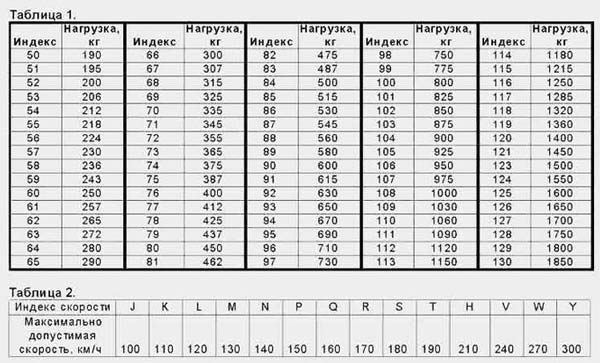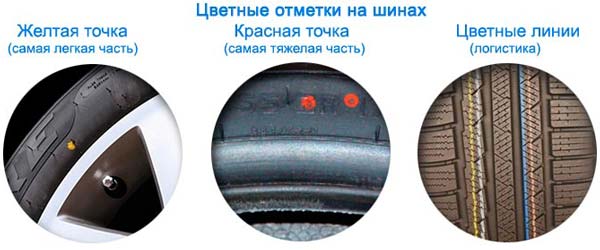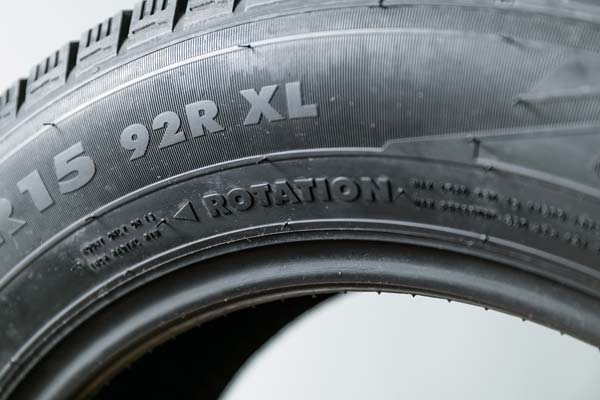A lot depends on the right choice of shoes for a car. When deciding to buy a kit, you can be guided by various comparative tests. However, it is worth remembering that their characteristics must correspond to the operating conditions. In this case, the information indicated in the marking on the sidewall of the tire will help. Such inscriptions on the tire indicate the size of the product and its technological characteristics. Below we will decipher the symbols and try to figure out what the numbers and letters in the rubber marking mean.
There are mandatory and optional designations in tire marking. So, on each tire the manufacturer, the brand of the rubber itself and the size of the tires will be indicated. The designation of three numbers on the tires indicates the dimension of the wheel in inches, the width of the rubber and the height of the profile. The numbers are on the outside.
We have a wheel with parameters, for example, 195 60 R16. This means that we have rubber in front of us, with a tread width of 195 mm. The second number is the ratio of the picture's height to width. The larger this parameter, the more “hooky” the rubber will be. This value is usually referred to as the profile index.
The third number is the inner diameter of the tire in inches. In general, a common mistake is that motorists purchase wheels without paying attention to some data on changes in external parameters. For example, size 185 65 r15 will differ in height from 210 65 r15 with the same bore diameter. The ratio of the profile to the width in our case can interfere with the installation of tires on the car. This factor should be understood and taken into account. And a special calculator will help you correctly calculate the size of the tires. 
Speed Indices

Also, tire manufacturers are required to provide all tires with a speed index. This sign can be found immediately after the wheel size indicator. It tells you how fast you can travel on the roads. A table that deciphers the speed index of passenger car tires will help to read this sign correctly.
| Tire classification by speed | |||||||||
|---|---|---|---|---|---|---|---|---|---|
| Designation | N | P | Q | R | S | T | U | H | V |
| Speed | 140 | 150 | 160 | 170 | 180 | 190 | 200 | 210 | 240 |
Load indices
Immediately after the speed index on the tires of the car there is an index of the permissible load on each wheel. For example, tire marking contains an indicator of 88t. This indicates that the machine can travel at a maximum speed of 190 km / h, and the maximum allowable load on each wheel is 560 kg.
On certain tires, you can find designations in the form of the letters XL or the words Reinforced. This marking is usually awarded to tires, the load index of which is higher than standard values. If the number 88 is written on the sidewall of an xl or extra load tire, then 3 should be added to the value. to decipher this figure is as 91 or 615 kg per wheel.
| Numerical designation | load in kg one wheel for cars |
|---|---|
| 60-70 | 250-335 |
| 71-80 | 345-450 |
| 81-90 | 462-600 |
| 91-100 | 615-800 |
| 101-110 | 825-1060 |
| 111-120 | 1090-1400 |
| 121-129 | 1450-1850 |
Explanation of the American size designation
American tire manufacturers resort to a different tire labeling. The first one is very similar to the European one, only before the dimension there are additional letters P - passenger, LT - light truck or T - truck. For example, 185 r14c P means that this is a wheel with a tread width of 185 mm, a diameter of 14 inches and designed for passenger cars.
The second system of classification of their products has a completely different look. If the European system measures the dimensions of car tires in millimeters, then the American system measures in inches. However, it is quite easy to understand. For example, there are numbers on tires 27*11*r15. The first number is the outside diameter of the tire, the second number is the tread width, and the last number is the inside diameter.
Tire marking with colored marks

To facilitate the installation of wheels on rims, manufacturers sometimes equip with additional color marks that carry their own information. How to decipher such icons - below.
Yellow tire marking
Sometimes on tires you can find a yellow dot or triangle, which means the easiest place on the tire. When mounting, it is necessary to align the mark with the heaviest part of the disc to facilitate balancing.
Red marking of rubber
Additional tire parameters include red circle or triangle symbols that can be found on the sidewall of the rubber. This is the designation of the most rigid place of the tire wall. It must be aligned with the “L” mark on the disc.
White stamp with number
A white stamp with a number, located on the outer sidewall, carries information about the inspector who carried out the final "acceptance" of the goods.
colored stripes
Some tires are equipped with radial colored stripes. They help to identify tires of certain brands in the store, quickly look for them in the warehouse. Sometimes the color of the strip indicates the date of issue or the country of manufacture, and also indicates the passage of a run-in.
Additional markings on the sidewall of the tire

On many passenger tires, in addition to the designation of the model and type of tread, there is an additional marking:
- the letter R indicates that the rubber is a radial design - older models are indicated by other letters;
- the presence of the word steel in the construction means the presence of a steel cord;
- E in a circle indicates compliance with the European requirements ece;
- Aqua - tires with improved behavior on wet pavement and in aquatred aquacontact rain conditions;
- TL (TubeLess) - tubeless tire, in the absence of this marking, a tube is required;
- Outside - the outside of the installation. Differs from the inner sides with an asymmetric tread. It will help you figure out which side should be outside when installing a set of rubber on a car;
- DOT - compliance with the safety requirements of standardization countries;
- Rotation - applied to kits with a directional pattern. The wheels must rotate in the direction indicated by the arrow;
- Treadwear is an indicator of wear resistance. On many tires, wear markings are made in the form of grooves. An increased number of layers is indicated by the letter C;
- RF (RunFlat) - rubber with a reinforced cord. Able to travel more than 80 km at the lowest pressure - 0 atmospheres. There are cases when both punctured wheels kept the road well at speeds up to 80 km / h.
seasonality

It is also worth understanding what the seasonal badges on the wheels mean.
- Winter - designation of winter tires. It features a soft rubber compound, and some tires are equipped with spikes, 1.6 mm high, providing better grip on icy roads;
- M+S badges are found on many winter and summer kits. This marking stands for Mud+Snow. Tires have a pronounced pattern and are able to behave well in bad weather. However, universal tires behave worse than profile kits.
Date of manufacture

Next to the place of the wheel size, there are four more digits indicating the date of manufacture of the kit. Reading it is quite simple if you understand the calendar. The first two digits are the serial number of the week, and the second are the year of production. That is, the number 4215 indicates that the kit was produced on the 42nd week of 2015.
Permissible loads
A few more words on how to read the load capacity index. To achieve the maximum value, the pressure must also be maximum. The designation is given in psi and is indicated as Max Pressure on the sidewall of the tire.







